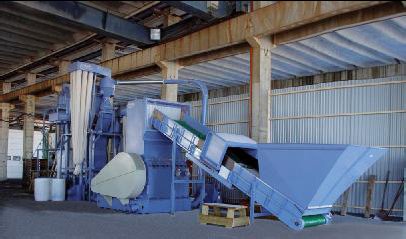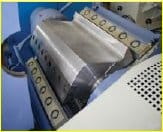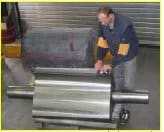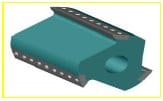The GRAF company based at Teningen has recently commissioned a coextrusion blowmoulding machine manufacturing products for rainwater use with a volume of up to 3000 l. The Graf company has a large product range all about water management and is the greatest German manufacturer of rainwater containers.
The multilayer containers are produced in one single production step and side products of each finished part are tops and tails with a unit weight of more than 20 kg, the weight of the purgings can be many times higher. A Herbold granulator of the SMS series recycles these tops and tails, still warm, next to the line where they are produced. Herbold Meckesheim GmbH is the manufacturer of this turn-key customised grinding plant.
A characteristic feature of this plant is the little power input needed for the size-reduction of these viscoplastic high-molecular PE tops and tails – this was in the end run the decisive criterion for GRAF to decide in favour of the Herbold granulator. The delivered plant consists of a belt conveyor, the granulator itself of the SMS 60/100 series, a suction unit and sound insulation for sound level below 80 dB.

Fig. 1: Grinding plant with Herbold granulator SMS 80/ 160
The low power input is due to the special rotor design: the rotor of the Herbold granulator has been manufactured from a single forged piece. For the rotor this does not only mean an enormous centrifugal mass but also a great stability due to the fact that there are no welding seams. The rotor knives of this rotor have been fixed against a back stop, thus preventing the rotor knives from moving even with extremely high cutting forces. This is absolutely necessary for this application since the tops and tails and the purgings can have wall thicknesses of up to 100 mm.

Fig.2: Interior view of the A3 rotor

Fig. 3: Blank and finished A rotor
Herbold granulators work with a true double cross cutting action: Not only have the rotor knives been mounted at an inclined angle but also the stator knives have been mounted at an inclined opposed angle: this staggered configuration is the only one to ensure a constant cutting gap across the whole length of the knife and neatly cut material. The end product has extremely good flowing properties, few fines and a high bulk density. Without any difficulty it can be reintroduced in-line into the recycling process.

Fig. 4: Three-dimensional drawing




